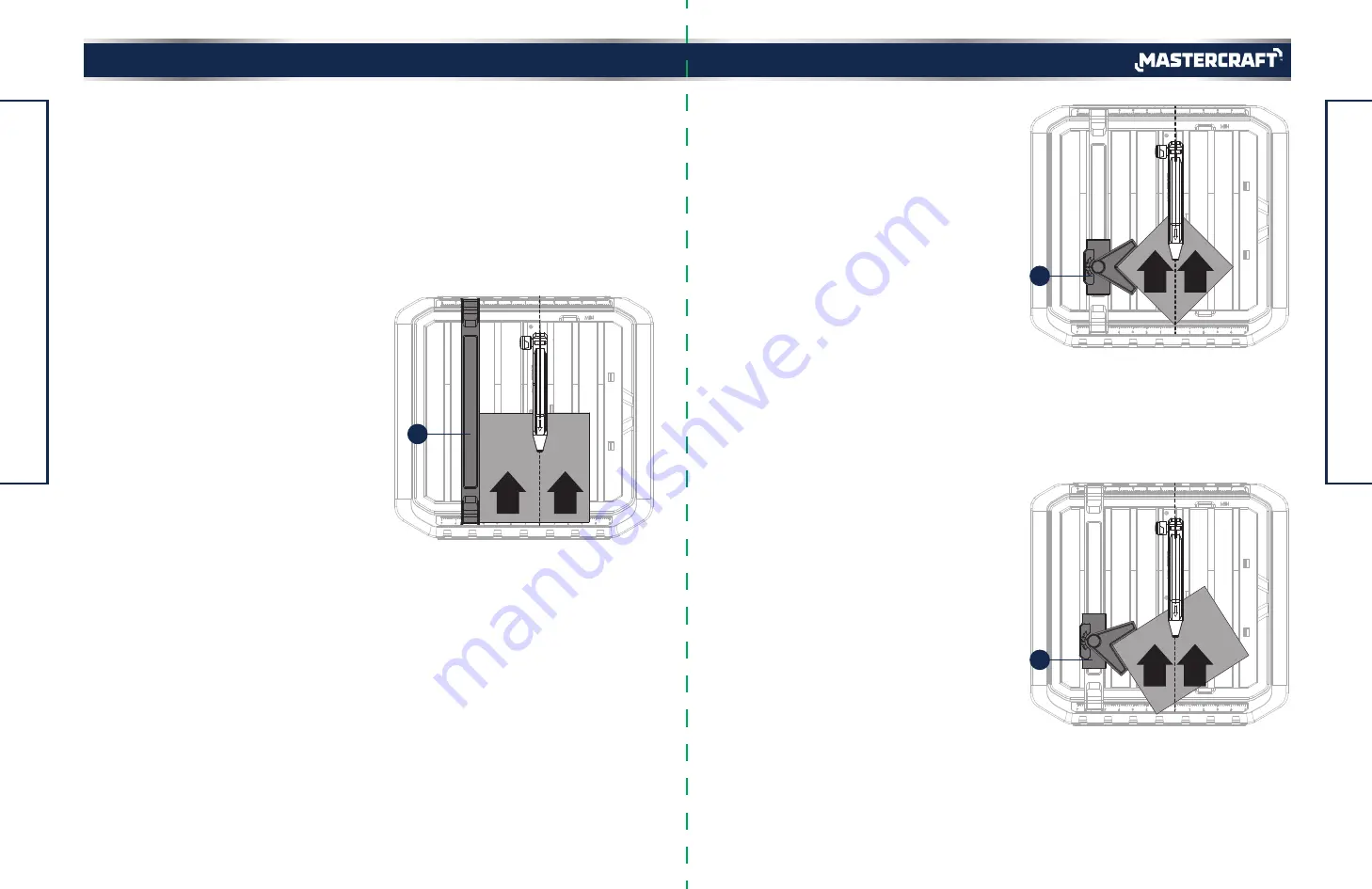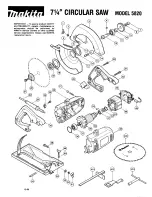
OPERATING INSTRUCTIONS
OPERATING INSTRUCTIONS
27
26
11
1
11
model no. 055-6789-8 | contact us 1-800-689-9928
Fig. 14
Fig. 15
Fig. 16
MAKING A DIAGONAL CUT (Fig. 15)
45° Diagonal cuts are also referred to as “long point-to-
long point cuts”.
•
Using a marker or grease pencil, mark the area to be
cut on material.
• Install the mitre guide (11).
•
Adjust mitre guide to 45° using angle scale and tighten
securely with lock knob.
•
Place the material on the table and firmly against the
mitre guide.
•
Make sure the material is clear of the cutting wheel
before turning on the saw.
• Turn the on/off switch to the ON position.
•
Let the cutting wheel build up to full speed and wait for
the wheel to get wet before moving the material into the
wheel.
•
Hold the material firmly against the mitre guide and
table. Feed the material into the cutting wheel.
•
When the cut is made, turn the saw OFF. Wait for the
cutting wheel to come to a complete stop before
removing any part of the material.
MAKING A MITRE CUT (Fig. 16)
Mitre cuts are used for cutting outside and inside corners
on material, decorative chair rails, and base mouldings
with the material at any angle to the wheel other than 90°.
Mitre cuts tend to “creep” during cutting. This can
be controlled by holding the workpiece securely against
the mitre guide.
•
Using a marker or grease pencil, mark the area to be
cut on material.
• Install the mitre guide (11).
•
Set the mitre guide to desired angle using the mitre
guide scale, and tighten securely with lock knob.
•
Place the material on the table and firmly against the
mitre guide.
•
Make sure the material is clear of the cutting wheel
before turning on the saw.
• Turn the on/off switch to the ON position.
•
Let the cutting wheel build up to full speed and wait for the wheel to get wet before moving the material into
the wheel.
• Hold the material firmly against the mitre guide and table. Feed the material into the cutting wheel.
•
When the cut is made, turn the saw OFF. Wait for the cutting wheel to come to a complete stop before removing
any part of the material.
•
ALWAYS draw the line to be cut on the tile using a marker or grease pencil. If the tile is shiny and hard-to-
mark, place masking tape on the tile and mark the tape.
•
A common problem when cutting tile is straying from the marked line. Once you’ve strayed from the mark,
you can not force the wheel back to the line by twisting the tile. Instead, back up and recut the tile slicing off
a small amount of tile until the wheel is back on track.
• To avoid this problem, use the rip guide or mitre guide whenever possible.
•
Another problem is cutting difficult material. To prevent chipping of the material at the end of the cut: first
cut 1 1/2" of the material, then turn off the saw; flip the material around 180° and make the cut.
•
Clean the saw blade, rip and mitre guides, and bevel table frequently during use. Debris from the cut material
can interfere with the function of the tool.
MAKING A CROSS CUT (Fig. 14)
Cross cuts are straight 90° cuts. The material is fed into
the saw at a 90° angle to the wheel.
•
Using a marker or grease pencil, mark the area to be cut
on material.
• Remove the mitre guide.
•
Position the rip guide (1) the desired distance from the
wheel for the cut and securely lock levers.
•
Place the material on the table, firmly against the rip
guide.
•
Make sure the material is clear of the cutting wheel
before turning on the saw.
• Turn the on/off switch to the ON position.
• Let the cutting wheel build up to full speed and wait for
the wheel to get wet before moving the material into the
wheel.
•
Hold the material firmly against the rip guide (1) and
feed the material into the cutting wheel.
When the cut is made, turn the saw OFF. Wait for the
cutting wheel to come to a complete stop before
removing any part of the material.




































